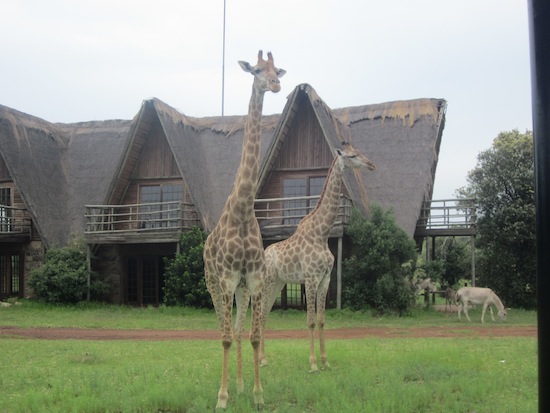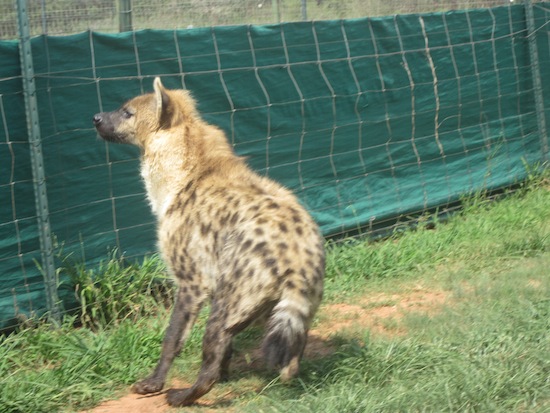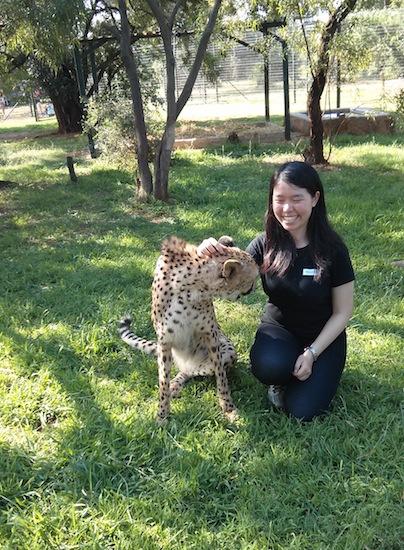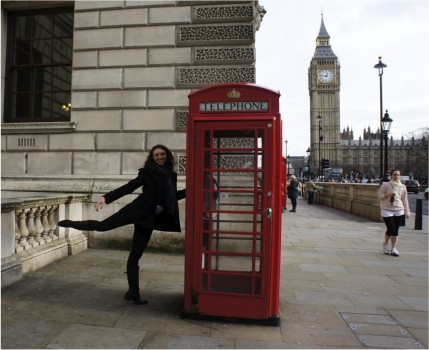
“Ever Pressing Forward,” a statue by Karl A. Quilter. Photo by Jessica Muttitt.
During the summer of 2014, Alumni Memorial Scholar (AMS) Jessica Muttitt ’15 used her AMS Grant to study an important collection of 19th-century dolls in Salt Lake City, Utah. Her goal was to better understand how childhood toys generally–and dolls specifically–were used to transmit the ideals, values, and knowledge of Mormon pioneers. In what follows, Jessica provides a preliminary account of her travel and research experience. You can learn more by attending her presentation at the fall AMS Symposium, scheduled for November 18, 2014.
While studying in London last spring with Colgate’s History Study Group, I conducted my research project on the role of dolls and dolls’ houses in the formal and informal education of young girls in Britain. I found that the development of the baby doll at the turn of the twentieth century coincided with a rise in education for females and signaled a societal backlash against this perceived breech of home and family. Thus, according to my findings, an understated domestic education, involving dolls, was developed which subtly pushed girls to desire home and family, rather than education and career.
As I performed this research, I wondered if there was a similar phenomenon in the United States. I found that the American West provided a perfect case study. Since pioneers could only carry a few of their belongings, what was important to them can easily be determined by surveying the objects that ultimately came to the Salt Lake Valley with them. The collections of Mormon pioneers at the Pioneer Memorial Museum in Salt Lake City, Utah most intrigued me and I applied to use my Alumni Memorial Scholars grant to visit the museum and their collections in person.
My Alumni Memorial Scholar project, titled “Pioneering Childhood: Learning Societal Roles through Play in the American West,” was to focus on the games and toys that children were given to play with and, furthermore, how these were influenced by the ideals of the community. I approached this project similarly to the one I conducted in London, meaning that I examined the toys themselves, children’s periodicals, secondary information, and other documents and files that related to the upbringing and education of children.

The Pioneer Memorial Museum in Salt Lake City, Utah. Photo by Jessica Muttit.
The Pioneer Memorial Museum, where I was able to find all of these materials, is located in downtown Salt Lake City, near the Utah State Capitol, and boasts the world’s largest collection of artifacts on one subject: the First Migration. This event took place from July 24, 1847, when pioneers first settled in Salt Lake, to May 10, 1869, when the eastward and westward railroads were joined at Promontory, Utah. It is also the headquarters for the Daughters of Utah Pioneers, and its main goal focuses around family genealogy research of the First Migration to the Salt Lake Valley. The museum is quite large, including cases upon cases of objects belonging to pioneers. The building also includes history, archives, and photography departments, where patrons can research their ancestors who came to the Salt Lake Valley during the First Migration, find pictures and documents to take home with them, and see any artifacts in the museum that their family formerly owned or donated.
When I first arrived at the museum, I was greeted warmly, albeit, skeptically by the museum staff and volunteers. (Researching dolls and children’s toys often gets me a lot of confused looks.) Essentially, they told me, they did not know what I was looking for, but they would be glad to help me find it. I spent my first day getting acquainted with the museum, looking at the collections of dolls and toys, and combing through the initial files and secondary source material the archives department had graciously pulled together for me. I also discussed my project goals with them and determined what research tools they would be able to provide me with.
Although I went into the project with the intention to study toys and games more broadly than I had during my research in London, I was ultimately drawn to dolls once again. The pioneer doll collection is in a large room on the second floor of the museum and spans across time and place. There are rag dolls, European dolls, and also American-made dolls. This collection draws from the collections of various previous owners, donators who have been given or purchased dolls from this time period, and doll makers that have given their dolls to the museum for safekeeping. There are also modern dolls made to portray pioneers, pioneer dolls, and dolls made in the style of those that would have been traditional pioneer dolls. When walking through the room that holds the dolls, the museum’s labels provide background information about the doll’s story as well as identifying if there are any known pioneer owners.
Each doll had a unique story, but all shared one trait in common – they were incredibly important to the families who owned them. A statue outside of the museum illustrates one reason why. The name of the piece is “Ever Pressing Forward,” and it was completed in 2001 by sculptor Karl A. Quilter. It shows a woman, leading a young boy by the hand. He looks up at her, and she looks behind them, at a mound of ground and flowers with a stick supporting a small bonnet. Presumably, her daughter has died, but given the nature of their journey, she and her son must “press forward” despite their sorrow. As a memento, the woman clutches her daughter’s doll, bringing it with her to their new life in the Salt Lake Valley.
This statue demonstrates an overarching theme: Dolls were, and still are, prized as pioneer artifacts because they provide an emotional link to the past. This is connected to the focus Mormons place on the past, both the general history of the Mormon peoples, and their personal family histories. But, in many ways, the dolls represent more than a document, picture, or household object ever could. Dolls were important to the girls as they journeyed westward, as they were often the sole personal items children were allowed to bring because of the weight restrictions of covered wagons. Many girls had a doll made by their mother or grandmother, and often learned to sew the doll’s clothes themselves.
My conclusion regarding the emotional value of dolls is also demonstrated in the secondary materials the museum provided, including their own publications on their collection and external publications. They have produced a pamphlet on dolls that shares a lot of the dolls’ stories and ultimately concludes that the dolls that were most popular and influential, especially handmade rag dolls, cannot be shown in the museum, because they were loved too much by the girls who owned them.
Children’s magazines are another great primary resource, because the values and expectations of society become apparent when you examine the articles, fictional stories, and editorial comments they contain. This is also where I noticed the prominence of the strong attachment Mormons feel for their ancestors’ possessions and the importance of this history in both the religious and secular education of children.
I will present the specific findings of my research later this semester during the November 18th AMS Symposium. This project allowed me to travel to somewhere I had never been before, meet and talk with some wonderful people, and create an interesting project that stresses the role that objects can play in historical research. Overall, my research trip was a rewarding experience that has allowed me to bring some interesting ideas back to campus and my research projects within Colgate’s History Department.









